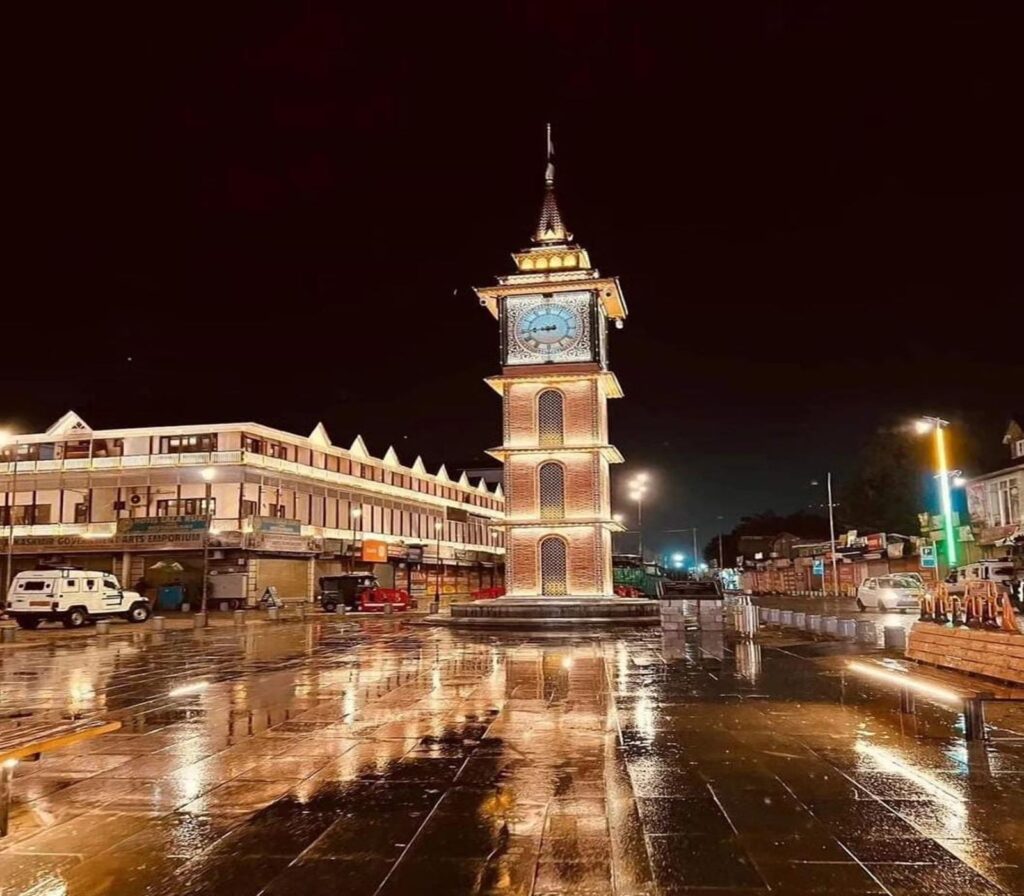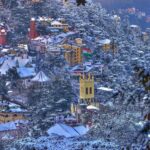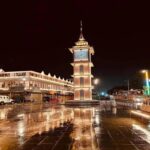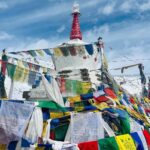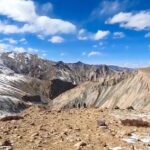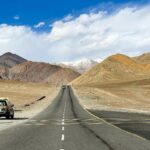About srinagar kashmir
Srinagar kashmir is summer capital of Jammu and Kashmir. It is a captivating place that perfectly captures the astonishing beauty of the Himalayan mountains. Located in the beautiful Kashmir Valley, Srinagar is recognized for its breathtaking views, beautiful lakes, and abundant vegetation.
The city’s picturesque appeal is enhanced by its location on the banks of the majestic Jhelum River. The Dal Lake, a large, mirror-like body of water surrounded by the recognizable houseboats and Shikara boats and providing tourists with a singular, peaceful experience, is one of Srinagar’s most notable characteristics.
An additional attraction of Srinagar is the Mughal Gardens, which show the Mughal architectural beauty through well kept lawns, colorful flower beds, and flowing water channels. Among the important religious and cultural sites that highlight the city’s rich legacy are the historic Jama Masjid, Hazratbal Shrine, and Shankaracharya Temple.
The busy shops, narrow lanes, and traditional Kashmiri handicrafts, such asMade-of-paper objects, Pashmina shawls, and intricately woven carpets, can be found in Srinagar’s old city. The city’s gastronomic appeal is enhanced by the mouthwatering range of dishes provided by the area’s cuisine, which draws heavily from Persian and Central Asian cuisines. Wazwan, Yakhni, and Rogan Josh are a few of these dishes.
Although the geopolitical complexity of the area, travelers continue to be drawn to Srinagar by its stunning Himalayan backdrop, natural beauty, and rich cultural legacy. The city continues to be a symbol of the fortitude and spirit of the Kashmiri people, who have managed to hold onto their rich cultural heritage in the face of adversity.
History of sriagar
The previous civilizations that lived in the Kashmir Valley are essential to Srinagar’s history. Over the ages, the area has seen the rise and fall of several kingdoms as well as the impact of many civilizations.
The Kashmir Valley first occurs in the old Hindu epic called the Mahabharata, where it is referred to as Kashyapa Meru, after the wise man Kashyapa. The history of Srinagar dates back to Emperor Ashoka’s foundation of the city, which was then known as Parvasenpur in the third century BCE. It later joined the Gupta and Mauryan Empires.
In the 14th century, the region came under the rule of the Muslim sultans, and Islam began to take root in Kashmir. The most notable among these rulers was Zain-ul-Abidin, also known as Budshah, who is credited with promoting art, culture, and tolerance in the region. During the 15th and 16th centuries, Kashmir became a center for Islamic learning and Sufi mysticism.
In the 19th century, the Sikh Empire annexed Kashmir, but after the First Anglo Sikh War in 1846, the British East India Company sold the region to Maharaja Gulab Singh of the Dogra dynasty. The Dogras ruled until 1947 when Maharaja Hari Singh chose to accede to India after the partition of British India.
The modern history of Srinagar is marked by geopolitical tensions, particularly the India Pakistan conflict over Kashmir. The region has experienced periods of insurgency and unrest, leading to a significant military presence. Despite these challenges, Srinagar has remained a cultural and economic hub, attracting tourists with its natural beauty, historical landmarks, and vibrant traditions.
Afghan and Sikh Rule in Srinagar kashmir
Afghan Rule (1753-1819):
- Political Instability: Frequent changes in governors and internal conflicts within the empire led to political instability in Kashmir.
- Durrani Empire: Srinagar came under the control of the Durrani Empire after being invited by Kashmiri nobles who were dissatisfied with Mughal rule. The Durranis ruled through governors appointed from Kabul.
- Economic Exploitation: The Afghans imposed heavy taxes and levies on the local population, leading to economic hardship and resentment.
- Limited Development: While some public works were undertaken, such as the Khanqah-e-Mu’alla mosque, infrastructure and development lagged during this period.
- Religious Tolerance: Although Muslim rulers, the Afghans displayed relative religious tolerance towards Srinagar’s diverse population, including Kashmiris, Hindus, and Buddhists.
Sikh Rule (1820-1846):
- Ranjit Singh’s Conquest: Maharaja Ranjit Singh of the Sikh Empire conquered Kashmir after the Battle of Shopian. Initially welcomed by locals who hoped for relief from Afghan rule, their experience soon changed.
- Centralized Administration: Unlike the Afghans, the Sikhs established a centralized administration under Sikh governors appointed from Lahore.
- Modernization Efforts: Some modernization efforts were made, such as introducing a new land revenue system and improving communication infrastructure.
- Economic Burdens: However, the new taxes and levies were just as heavy as those under Afghan rule, causing discontent among the populace.
- Religious Tensions: While initially tolerant, some Sikh rulers later imposed discriminatory policies towards the Muslim majority, leading to growing resentment.
Both Afghan and Sikh rule were marked by economic hardships and political instability.
Afghans were less centralized but displayed more religious tolerance, while Sikhs implemented a centralized administration but faced religious tensions.
Both periods left a mixed legacy, contributing to some development but also causing much discontent among the people.
how to reach srinagar kashmir
- By Air (Airplane):Sheikh ul-Alam International Airport (SXR): The airport in Srinagar is well connected to major cities in India. You can book a direct flight to Sheikh ul-Alam International Airport from various airports, including Delhi, Mumbai, and Jammu. The airport is located approximately 12 kilometers from the city center.
- By Road (Car):National Highway 1 (NH1): Srinagar is connected to the rest of India by the National Highway 1 (NH1), also known as the Srinagar Leh Highway.
- The road journey from cities like Jammu and Delhi involves picturesque landscapes but can be time consuming due to the mountainous terrain. It’s advisable to check the road conditions, especially if you are traveling during the winter months.
- By Train:There was no direct train connectivity to Srinagar. However, you could take a train to Jammu Tawi Railway Station, which is well connected to major cities in India. From Jammu, you would need to continue your journey by road to reach Srinagar.
Average Temperatures in Srinagar kashmir
| Month | Average (°C) | Average (°F) |
| January | -5 to 2.7 | 36.9 |
| February | -5 to 5.8 | 42.4 |
| March | 10.4 | 50.7 |
| April | 14.6 | 58.3 |
| May | 19.5 | 67.1 |
| June | 23.1 | 73.7 |
| July | 24 | 75.9 |
| August | 24.4 | 74.3 |
| September | 23.5 | 66.6 |
| October | 19.2 | 53.8 |
| November | 12.1 | 43.2 |
| December | 6.2 | 39.0 |
Best time to visit in sringaar kashmir
The best time to visit Srinagar largely depends on your preferences and the type of experience you are seeking. Srinagar experiences distinct seasons, each offering a different charm to visitors. Here are the general characteristics of each season:
- Spring (March to May):-Spring is a delightful time to visit Srinagar when the weather is mild and the valley comes alive with colorful blossoms. The gardens, such as Shalimar Bagh and Nishat Bagh, are in full bloom during this period. The temperature is generally pleasant, making it suitable for outdoor activities.
- Summer (June to August):-Summer is the peak tourist season in Srinagar. The weather is warm, and the temperatures can range from comfortable to mildly hot. This is an excellent time for sightseeing, boating on Dal Lake, and exploring the Mughal Gardens. However, it can be crowded due to the influx of tourists.
- Autumn (September to November):-Autumn in Srinagar brings a breathtaking display of colors as the Chinar trees turn shades of red and gold. The weather remains cool and pleasant, making it another favorable time for tourists. The floating gardens on Dal Lake and the surrounding hillsides present a picturesque setting.
- Winter (December to February):-Winter in Srinagar is characterized by snowfall, and the region transforms into a winter wonderland. While the city looks stunning covered in snow, the temperatures can drop significantly, and some activities may be restricted. If you enjoy snow and winter sports, this is the time to visit. The famous Gulmarg, known for its winter sports, is in close proximity to Srinagar.
20 Best places to visit srinagar kashmir
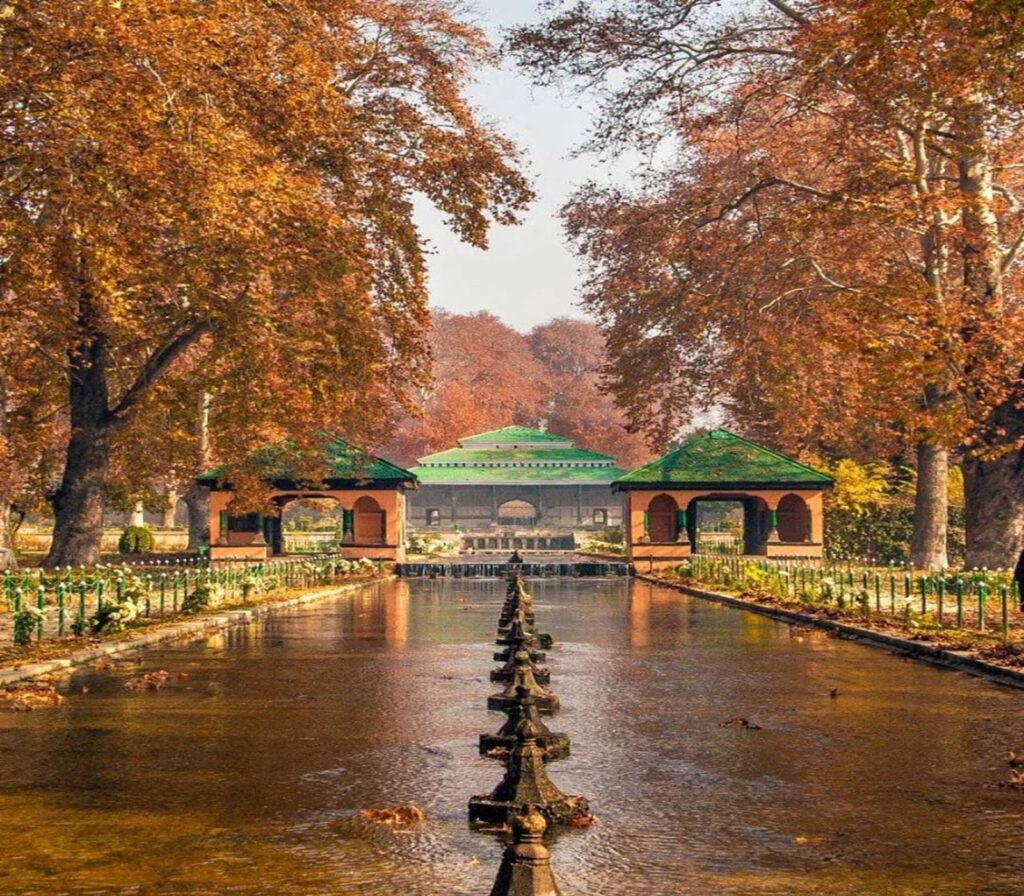
- Shalimar Bagh: A Mughal garden built by Emperor Jahangir.
- Nishat Bagh: Another beautiful Mughal garden situated on the eastern side of Dal Lake.
- Chashme Shahi: A garden built around a spring, known for its refreshing water.
- Hazratbal Shrine: A prominent Muslim shrine on the northern shores of Dal Lake.
- Jamia Masjid: A grand mosque with impressive architecture.
- Shankaracharya Temple: Also known as the Jyeshteshwara temple, it offers panoramic views of Srinagar.
- Pari Mahal: A historic garden with a terraced layout.
- Nehru Park: A scenic park situated in the middle of Dal Lake.
- Char Chinar: An island on Dal Lake with four ancient Chinar trees.
- Nagin Lake: A beautiful, less crowded lake adjacent to Dal Lake.
- Mughal Road: A historic road that connects Srinagar with Poonch and Rajouri.
- Dachigam National Park: A wildlife sanctuary known for its population of endangered Hangul deer.
- Jama Masjid Nowhatta: A prominent mosque in the Nowhatta area of Srinagar.
- Kheer Bhawani Temple: A revered Hindu temple dedicated to the goddess Kheer Bhawani.
- Hari Parbat: A hill with a fort and temples, offering stunning views of the city.
- Dal Gate: A gate located at the entrance of Dal Lake.
- Srinagar kashmir Jamia Masjid: One of the largest mosques in Srinagar.
- Indira Gandhi Memorial Tulip Garden: A beautiful garden with a variety of tulips, located near Dal Lake.
- Kashmir Golf Course: A golf course offering a serene environment.
- Pandrethan Temple: An ancient Hindu temple with historical significance.
Tulip Garden Kashmir
This tulip garden, also known as the Indira Gandhi Memorial Tulip Garden, is a wonder that attracts visitors from all around the world to witness its stunning display of colorful tulips. The Tulip Garden in Kashmir is a magnificent sight to observe. This garden spans across 30 acres and is a paradise for nature lovers.
The Tulip Garden is located at the foothills of the majestic Zabarwan Range, overlooking the iconic Dal Lake in Srinagar, the summer capital of Jammu and Kashmir. Opened in 2008, it has grown to become one of the largest tulip gardens in Asia. Its layout is a blend of both Mughal and modern landscaping styles, carefully designed to showcase the tulips in all their splendid glory. It was created by the Jammu and Kashmir Tourism Department with the intention of promoting tourism in the region and show the natural beauty of Kashmir.
The garden is famous for its vibrant display of tulips, which bloom in a myriad of colors. During the Tulip Festival held in April, the garden comes alive with cultural performances, food stalls, and various activities. It’s a celebration of the blooming tulips and a time when visitors flock to witness this breathtaking spectacle.
The garden is strategically designed with meticulously arranged flowerbeds that showcase the tulips in all their glory. The rows upon rows of tulips create a mesmerizing sight, with each flower adding to the overall beauty of the landscape. The garden offers stunning views of the Dal Lake and the majestic snow-capped mountains, providing a picturesque backdrop for visitors.
Visiting the Tulip Garden is a sensory experience. The vibrant colors, the sweet fragrance of the flowers, and the calm surroundings make it a truly attractive place. It’s no wonder that this garden has become one of the top tourist attractions in Kashmir. Apart from the tulips, the garden also features other varieties of flowers, adding to its attraction. There are well-maintained pathways that allow visitors to explore the garden at their own pace, taking in the beauty at every turn.
It’s a perfect spot for photography, as every angle offers a stunning photo opportunity. The Tulip Garden is not just a visual treat, but also a place of peace. It offers a calm getaway from the busy and noisy everyday life. People can enjoy and surround themselves with the beauty of nature. It’s a place where one can relax, unwind, and appreciate the wonders of creation.
Pari mahal srinagar kashmir
Pari Mahal, also known as the “Palace of Fairies”, is a seven-terraced garden located on the Zabarwan mountain range overlooking the city of Srinagar and Dal Lake in Kashmir. It was built by Mughal Prince Dara Shikoh in the mid-1600s as a library and observatory.
The palace is a fine example of Mughal architecture, with features such as arched doorways, chhatris (domes), and delicate latticework. The gardens are laid out in a symmetrical pattern, with fountains and pools.
Pari Mahal is a popular tourist destination, and is also a UNESCO World Heritage Site. The palace is in a state of disrepair, but restoration work is underway.
Nishat Bagh srinagar kashmir
Nishat Bagh, which means “Garden of Pleasure,” is a beautiful garden in Srinagar, a city in Jammu and Kashmir. It’s a historic garden that shows off the beautiful buildings and gardens of the Mughal period. Nishat Bagh is near Dal Lake, and you can see amazing views of the tall Himalayan mountains and the pretty lake.
This garden was made a long time ago, about 400 years ago, by a man named Asif Khan. He was related to Empress Nur Jahan as her brother.
Shalimar Bagh srinagar kashmir
Shalimar Bagh is a stunning Mughal garden located in Srinagar, Kashmir. It was built in the 17th century by Emperor Jahangir for his beloved wife, Empress Noor Jahan. Shalimar Bagh is known for its breathtaking beauty and complex design. The garden is spread over 31 acres and is divided into three terraces, each with its own unique glamour. As you enter the garden, you’ll be greeted by a grand entrance gate adorned with beautiful paintings and calligraphy.
The first terrace, known as the Diwan-e-Aam, is a spacious courtyard where the emperor used to hold public meetings. It features a central water channel with fountains and rows of majestic Chinar trees. The second terrace, called the Diwan-e-Khas, is a more private area with pavilions and a stunning black marble throne. It was used for private meetings and entertainment.
Nigeen Lake srinagar kashmir
Nigeen Lake, also known as Nigeen Dal, is a beautiful and serene freshwater lake located in Srinagar, the capital of the Kashmir. It is often referred to as a quieter and less commercialized version of its more famous counterpart, Dal Lake.
Nigeen Lake is situated to the west of the more well-known Dal Lake, separated by a narrow causeway. It is connected to Dal Lake through a series of water channels, which allows for navigation between the two lakes.
The lake covers an area of about 18 square kilometers (7 square miles) and is relatively smaller than Dal Lake. Nigeen Lake is more elongated in shape and is surrounded by lush greenery and residential areas.
Dal Lake srinagar kashmir
Dal Lake is a beautiful and iconic destination in Srinagar, Kashmir. It is known for its mesmerizing beauty and serene surroundings. The lake is spread over an area of approximately 18 square kilometers and is surrounded by majestic mountains. Dal Lake is famous for its houseboats, also known as “Shikaras,” which are traditional Kashmiri wooden boats. These houseboats offer a unique and unforgettable experience for tourists. You can stay in these houseboats and enjoy the tranquility of the lake.
The houseboats are beautifully decorated and equipped with all the necessary amenities. One of the must-do activities at Dal Lake is taking a Shikara ride. These rides take you around the lake, allowing you to soak in the breathtaking views of the surrounding mountains and the floating gardens known as “Rad” or “Floating Gardens.”
These gardens are made up of layers of soil and vegetation, providing a unique and picturesque sight. Apart from the lake itself, there are several other attractions near Dal Lake that are worth visiting. Nishat Bagh and Shalimar Bagh are two stunning Mughal gardens located on the eastern side of the lake.
These gardens are known for their beautiful terraced lawns, fountains, and vibrant flowerbeds. They offer a peaceful retreat and a perfect spot for a leisurely stroll. Another popular attraction near Dal Lake is the Hazratbal Shrine, a revered Muslim shrine located on the western bank of the lake. It houses a sacred relic believed to be a hair strand of Prophet Muhammad.
The shrine attracts devotees from all over the world and is a significant religious site in Kashmir. If you’re interested in exploring the local culture and handicrafts, a visit to the Floating Market is a must. This market is set up on floating boats and offers a wide range of traditional Kashmiri handicrafts, including carpets, shawls, and wooden artifacts. It’s a great place to shop for souvenirs and immerse yourself in the local culture.
Floating Market srinagar kashmir
The Floating Market is a unique and vibrant attraction that adds to the charm of Dal Lake in Srinagar, Kashmir. The Floating Market is set up on a cluster of floating boats, creating a lively and bustling atmosphere. It is a hub for local vendors, artisans, and craftsmen who sell a variety of traditional Kashmiri handicrafts and products. From intricately woven carpets and exquisite shawls to beautiful wooden artifacts and traditional jewelry, the Floating Market offers a wide range of authentic Kashmiri goods.
Visiting the Floating Market is not just about shopping, it’s also an opportunity to immerse yourself in the local culture and interact with the friendly locals. The vendors are always eager to share the stories behind their products and offer insights into the rich heritage of Kashmiri craftsmanship.As you stroll through the market, you’ll be captivated by the vibrant colors and the aroma of freshly brewed Kashmiri tea and traditional snacks. You can sample local delicacies like kehwa (a traditional Kashmiri green tea), kahwah (a saffron-infused tea), and delicious street food such as kebabs and samosas.
The Floating Market is not just a shopping destination, it’s an experience in itself. The picturesque setting of floating boats against the backdrop of Dal Lake creates a magical ambiance. You can take a leisurely Shikara ride to explore the market and enjoy the scenic beauty of the lake. The market is open throughout the year, but it is particularly vibrant during the summer and autumn months when tourists flock to Dal Lake.
It’s advisable to visit in the morning when the market is at its busiest and the vendors have freshly stocked their goods. In conclusion, the Floating Market of Dal Lake is a must-visit destination for anyone traveling to Srinagar. It offers a unique shopping experience, a glimpse into the rich Kashmiri culture, and the chance to take home beautiful souvenirs that reflect the craftsmanship of the region. So, don’t miss the opportunity to explore this vibrant market and create unforgettable memories at Dal Lake.
srinagar to gulmarg
The distance between Srinagar and Gulmarg is approximately 50 kilometers (31 miles), and the journey can take approximately 1.5 to 2 hours by road, depending on the mode of transportation and road conditions. Here are the common ways to reach Gulmarg from Srinagar.
- Self Drive:If you are comfortable driving, you can rent a car and drive from Srinagar to Gulmarg. Make sure to check the road conditions and have the necessary permits if required.
- Guided Tours:Some tour operators offer guided day trips from Srinagar to Gulmarg. These tours often include transportation, allowing you to explore Gulmarg’s attractions and return to Srinagar on the same day.
- By Shared Taxis or Cabs:Shared taxis or cabs is also be available, where you share the vehicle with other travelers heading in the same direction. This can be a cost effective option.
- By Bus:State run buses and private operators provide bus services from Srinagar to Gulmarg. The bus journey may take a bit longer than a private car, but it is a more economical option.
- By Road (Taxi/Car):The most convenient and flexible way to travel from Srinagar to Gulmarg is by hiring a taxi or using a private car. The journey offers picturesque views, especially during the winter when the landscape is covered in snow.
Frequently Asked Questions about Srinagar kashmir
Is Srinagar safe to visit?
Yes, Srinagar has seen significant improvements in security over the years.
What is the best time to visit Srinagar?
Spring (March-May) and autumn (September-November) offer pleasant weather with comfortable temperatures and stunning scenery. Summer (June-August) can be hot and crowded, while winters (December-February) bring snowfall and limited tourist activities.
How to reach Srinagar?
Srinagar can be reached by air, train, and road. Srinagar International Airport offers direct flights from major Indian cities. Trains connect to Jammu, from where taxis or buses can be taken to Srinagar. Driving from nearby cities is also possible, but be prepared for potentially long journeys.
What are the most popular tourist attractions in Srinagar?
Srinagar’s crown jewels are its famous Dal Lake and houseboats. Other must visit sites include Mughal Gardens like Nishat Bagh and Shalimar Bagh, Hazratbal Shrine, Shankaracharya Hill, Jama Masjid, and Hari Parbat Fort. Day trips to Gulmarg, Pahalgam, and Sonamarg offer scenic landscapes and adventure activities.
What is the local cuisine like?
Kashmiri cuisine is known for its rich flavors and unique preparations. Try the melt-in-your-mouth Rogan Josh, spicy Kashmiri Mirchi Korma, flavorful Dum Aloo, and aromatic Kashmiri Kahwa. Don’t miss street food like Momos and Watal Pakoras.
What are the transportation options in Srinagar?
Shikaras (traditional wooden boats) and motorboats are popular for navigating Dal Lake. Taxis and auto rickshaws are readily available for city travel. Buses offer a public transport option. Walking is also enjoyable in many areas.
What are the cultural aspects of Srinagar?
Srinagar has a rich Kashmiri culture, evident in its traditional music, dance, and handicrafts. Witness a captivating Sufiana Qawwali performance, or admire intricate Kashmiri carpet weaving or papier-mâché artwork.
What are the shopping options in Srinagar?
Srinagar’s vibrant markets offer a treasure trove of local handicrafts like pashmina shawls, wood carvings, and Kashmiri pottery. Explore Lal Chowk Market, Residency Road, and Nehru Park for unique souvenirs and authentic experiences.
What are the accommodation options in Srinagar?
Houseboats on Dal Lake offer an unforgettable stay experience. Hotels cater to different budgets and preferences. Homestays and guesthouses provide a local touch. Choose your accommodation based on your desired location, budget, and travel style.
What are some safety tips for traveling to Srinagar?
Dress modestly, especially when visiting religious sites. Respect local customs and traditions. Be aware of scams and avoid unnecessary bargaining. Register with your embassy or consulate. Carry identification and necessary medication.
Discover the Magic of Kashmir’s Natural Beauty in Our New Blog – An Adventure You Can’t Miss! TULIP GARGEN , PAHALGAM , DAL LAKE SRINAGAR , GULMARG , SONMARG
